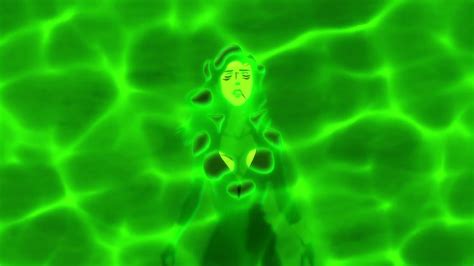
The increasing trend of characters returning from the dead in Hollywood films, once a rare narrative twist, has become increasingly common, raising questions about the impact on storytelling and the stakes for audiences. This phenomenon, driven by franchise demands and intellectual property value, diminishes emotional impact and undermines the narrative integrity of death.
Hollywood’s Lazarus Pit: Why Movie Deaths Don’t Stick Anymore
The finality of death in cinema, once a powerful narrative tool to evoke grief, raise the stakes, and drive character development, is rapidly becoming a relic of the past. In modern Hollywood, characters are increasingly resurrected, reversing supposedly definitive ends and diminishing the emotional resonance of their demises. From comic book universes to established franchises, the trend of bringing back the dead is so prevalent that it’s reasonable to ask: Does death in movies even matter anymore?
According to Yahoo Entertainment, this phenomenon, likened to a “Lazarus Pit,” is fueled by a confluence of factors, primarily the relentless demand for sequels, prequels, reboots, and expanded universes. Studios, driven by the lucrative potential of established intellectual property (IP), are reluctant to permanently retire beloved characters, regardless of their on-screen fate. This reliance on familiar faces, while commercially understandable, often comes at the expense of narrative integrity and emotional depth.
One of the most prominent examples of this trend is in superhero films, particularly within the Marvel Cinematic Universe (MCU) and the DC Extended Universe (DCEU). Characters like Gamora (Guardians of the Galaxy), Phil Coulson (Agents of S.H.I.E.L.D.), and numerous others have experienced resurrections through various means, including alternate timelines, magical artifacts, or advanced technology. The DCEU has also seen its share of revivals, with characters seemingly impervious to permanent consequences.
“The audience knows that no one is really dead, and so the emotional impact of those deaths is lessened,” says film critic and industry analyst Peter Debruge. The increasing expectation of resurrection reduces the impact of character deaths, since audiences are conditioned to anticipate their return, thus negating the emotional investment of the moment. This creates a cycle where studios feel pressured to revive characters to satisfy fans, further perpetuating the issue.
The pattern isn’t restricted to superhero genres. Franchises like “Fast & Furious,” known for its over-the-top action and disregard for realism, have also embraced the concept of resurrection. Michelle Rodriguez’s character, Letty Ortiz, returned from the dead, demonstrating the franchise’s willingness to defy logic and mortality for the sake of continuity and fan service. This extends to other action franchises, where characters cheat death repeatedly, turning near-fatal scenarios into mere plot inconveniences.
The consequences of this trend are far-reaching. By undermining the finality of death, filmmakers risk eroding the stakes in their stories. When characters can be brought back at will, their sacrifices become less meaningful, and the sense of danger diminishes. This can lead to audience apathy, as viewers become desensitized to character deaths and less emotionally invested in the narrative.
Furthermore, the overuse of resurrections can create plot holes and inconsistencies. The explanations for these revivals are often convoluted and defy logical explanation, straining credibility and disrupting the internal consistency of the fictional world. This can be particularly problematic in franchises with complex lore, where resurrections can contradict established rules and undermine previously established character arcs.
The article highlights the importance of character death as a narrative tool to develop other characters and raise the emotional stakes. When death is treated as a temporary inconvenience, the emotional impact on surviving characters is lessened. Grief, guilt, and the consequences of loss are diminished, preventing characters from experiencing meaningful growth and transformation.
Moreover, the over-reliance on resurrections can stifle creativity. Instead of exploring new characters and storylines, studios often resort to reviving familiar faces, limiting opportunities for fresh perspectives and innovative narratives. This can create a sense of stagnation, as franchises become trapped in a cycle of repeating the same themes and character dynamics.
Another aspect of the ‘Lazarus Pit’ issue is the evolving relationship between studios, creators, and fans. Social media and online communities have given fans a more direct voice in shaping the direction of franchises. While this can be a positive force, allowing for greater engagement and inclusivity, it can also lead to creative compromises. Studios may feel pressured to cater to fan demands, even if it means sacrificing narrative integrity.
The desire to please fans is understandable, but it’s essential for filmmakers to strike a balance between satisfying audience expectations and maintaining creative vision. Resurrecting characters solely to appease fans can ultimately undermine the quality of the storytelling and damage the long-term viability of the franchise. It is necessary for creators to consider the implications and avoid short-term gains at the expense of lasting impact.
The frequency of character resurrections also raises questions about the role of death in society. In a culture that often avoids discussing death, movies have traditionally served as a safe space to explore themes of mortality, grief, and loss. By trivializing death, Hollywood risks desensitizing audiences to its reality and diminishing its significance. This is not to say that death should always be treated with solemnity, but rather that it should be given the respect and emotional weight it deserves within the context of the story.
There is no easy solution to the “Lazarus Pit” problem. Ultimately, it requires a shift in mindset from both studios and audiences. Studios need to prioritize narrative integrity over short-term financial gains, while audiences need to be more open to new characters and storylines.
“The real problem is not that characters are dying, but that they’re not staying dead,” observes Debruge, emphasizing the importance of finality in storytelling. Only by restoring the weight and significance of death can Hollywood reclaim its power as a narrative force. The key is to allow stories to have natural conclusions without the expectation of eternal continuation driven by commercial interests.
The reliance on nostalgia and established IP also plays a crucial role. Hollywood often prioritizes reviving existing franchises and characters over developing new ones, contributing to the cycle of resurrections. While nostalgia can be a powerful draw for audiences, it can also limit creativity and prevent the industry from moving forward.
The trend may be also attributed to the complexities of intellectual property rights. Sometimes, a character’s return is dictated not by creative choices but by contractual obligations or licensing agreements. This further complicates the issue, as studios may be forced to revive characters even if it doesn’t serve the story.
There are exceptions to the rule. Some resurrections are handled with care and contribute meaningfully to the story. These revivals often involve well-developed explanations and serve a clear narrative purpose. However, these instances are becoming increasingly rare, as the trend leans toward more arbitrary and less impactful resurrections.
In conclusion, the increasing prevalence of resurrections in Hollywood films poses a significant threat to the power and emotional impact of storytelling. By undermining the finality of death, filmmakers risk eroding the stakes, diminishing character growth, and stifling creativity. Only by prioritizing narrative integrity and respecting the significance of death can Hollywood escape the “Lazarus Pit” and reclaim its ability to move and inspire audiences. The future of storytelling hinges on a willingness to embrace new ideas and allow stories to have meaningful conclusions without being endlessly resurrected for financial gain.
The future of movies, in terms of audience emotional engagement, hinges on whether or not the industry can wean itself off the crutch of constant revivals and learn to tell compelling stories with real stakes and lasting consequences. If Hollywood continues down this path, it risks creating a cinematic landscape where death loses all meaning, and audiences become increasingly detached from the stories they’re watching. The industry must find a balance between capitalizing on familiar IP and fostering new, original content that resonates with viewers on a deeper level.
The entertainment industry must realize that novelty and well-written stories are the keys to success, not reboots of the same old characters and storylines. To continue growing, content producers should invest in and promote new talent in screenwriting, directing, and acting. This may make for more creative and authentic productions.
The trend of resurrecting dead characters might be considered as a reflection of modern culture, in which there is an increasing inclination to avoid unpleasant experiences, such as mourning the death of a character. However, in many cases, it is the more unpleasant or painful events that allow people, and characters, to develop more thoroughly.
The film industry now must find a way to balance popular demand with creative integrity to avoid undermining the very principles of storytelling that have captivated audiences for generations. The resurgence of death in movies represents a crossroads, and the choices made now will decide the direction of storytelling for many years.
Frequently Asked Questions (FAQ)
Q1: Why are so many characters being brought back from the dead in movies?
A1: The primary driver behind the increasing trend of character resurrections in Hollywood is the financial incentive to keep popular franchises and intellectual property alive. As Peter Debruge, film critic and industry analyst, notes, the audience knows that no one is really dead, and studios are reluctant to retire beloved characters, even if they have died on screen. The demand for sequels, reboots, and expanded universes fuels this trend, as studios seek to maximize profits from established IP. This reliance on familiar faces often overshadows narrative integrity and emotional depth.
Q2: What impact does this trend have on storytelling?
A2: The overuse of resurrections significantly diminishes the emotional impact of character deaths, reduces the stakes in the story, and can lead to audience apathy. When characters can be brought back at will, their sacrifices become less meaningful, and the sense of danger is undermined. This also hinders character development, as the grief, guilt, and consequences of loss are minimized, preventing characters from experiencing meaningful growth. The trend can stifle creativity by encouraging studios to rely on revivals rather than exploring new characters and storylines.
Q3: Can you provide specific examples of characters who have been resurrected in movies?
A3: Numerous characters have been resurrected across various franchises. In the Marvel Cinematic Universe (MCU), Gamora (Guardians of the Galaxy) and Phil Coulson (Agents of S.H.I.E.L.D.) are prominent examples of characters who have returned from the dead. The “Fast & Furious” franchise resurrected Letty Ortiz (Michelle Rodriguez). Superhero films and action franchises, in general, frequently employ resurrections. These examples highlight the industry’s willingness to defy logic and mortality for the sake of continuity and fan service.
Q4: How does the relationship between studios, creators, and fans contribute to this trend?
A4: Social media and online communities have given fans a more direct voice in shaping the direction of franchises, which can lead to creative compromises. Studios may feel pressured to cater to fan demands, even if it means sacrificing narrative integrity. The desire to please fans can result in resurrecting characters solely to appease audiences, which can ultimately undermine the quality of the storytelling and damage the long-term viability of the franchise. Finding a balance between satisfying audience expectations and maintaining creative vision is crucial.
Q5: What can be done to address the issue of constant resurrections in Hollywood movies?
A5: Addressing the “Lazarus Pit” problem requires a shift in mindset from both studios and audiences. Studios need to prioritize narrative integrity over short-term financial gains, while audiences need to be more open to new characters and storylines. Only by restoring the weight and significance of death can Hollywood reclaim its power as a narrative force. This includes allowing stories to have natural conclusions without the expectation of eternal continuation driven by commercial interests, and fostering a culture that embraces new ideas and original content. The film industry must balance popular demand with creative integrity to avoid undermining the very principles of storytelling that have captivated audiences for generations.
Detailed Analysis and Expanded Context
The phenomenon of characters returning from the dead in movies is not entirely new. For decades, comic books have used various methods to bring back deceased characters, often through convoluted storylines involving alternate universes, clones, or mystical resurrections. However, the increasing frequency and mainstream acceptance of this trope in Hollywood films represent a significant shift in storytelling conventions.
The rise of the franchise model in Hollywood has played a crucial role in this trend. Studios are increasingly focused on building and maintaining large, interconnected universes that can generate revenue across multiple films, television shows, and merchandise. This approach necessitates keeping popular characters around, even if they have seemingly met their demise.
One of the key drivers of this trend is the immense value of intellectual property (IP). Characters like Iron Man, Batman, and Harry Potter are not just characters; they are valuable assets that can be exploited for years to come. Studios are reluctant to permanently retire these assets, as they represent a significant source of revenue and audience engagement.
The influence of fan culture cannot be overstated. In the age of social media, fans have a powerful voice in shaping the direction of franchises. Studios often monitor online discussions and respond to fan feedback, sometimes even altering storylines or resurrecting characters based on popular demand. This can create a feedback loop, where studios cater to fan expectations, even if it compromises the integrity of the story.
The availability of advanced visual effects technology has also contributed to the trend. Creating realistic resurrections is now easier and more affordable than ever before. This allows filmmakers to bring back characters in visually stunning ways, often without having to explain the logistics of their revival in great detail.
The consequences of this trend are multifaceted. As previously mentioned, it diminishes the emotional impact of death, reduces the stakes, and stifles creativity. However, it also has implications for the way audiences engage with stories.
When death is treated as a temporary inconvenience, audiences may become less emotionally invested in the characters and the narrative. This can lead to a sense of detachment, where viewers are simply watching the spectacle unfold without truly caring about the outcome.
The overuse of resurrections can also create plot holes and inconsistencies that undermine the credibility of the fictional world. This can be particularly problematic in franchises with complex lore, where resurrections can contradict established rules and undermine previously established character arcs.
Furthermore, the trend can have a negative impact on the actors involved. Actors who thought they were saying goodbye to a character may be asked to reprise the role, even if they have moved on to other projects. This can create scheduling conflicts and contractual issues, as well as potentially diminishing the actor’s enthusiasm for the role.
However, not all resurrections are created equal. Some revivals are handled with care and contribute meaningfully to the story. These resurrections often involve well-developed explanations and serve a clear narrative purpose. For example, a character might be brought back to confront their past, resolve a conflict, or sacrifice themselves for a greater cause.
The key to a successful resurrection is to ensure that it is earned and that it serves the story. The revival should not be arbitrary or gratuitous but rather a natural extension of the character’s arc and the overall narrative.
There are several ways that filmmakers can avoid the pitfalls of the “Lazarus Pit.” One approach is to focus on developing new characters and storylines rather than relying on revivals. This requires a willingness to take risks and invest in fresh talent.
Another approach is to treat death with respect and to give it the emotional weight it deserves. This means allowing characters to grieve, to mourn, and to grapple with the consequences of loss. It also means resisting the temptation to bring back characters simply to appease fans or boost ratings.
Filmmakers can also explore alternative ways of keeping characters alive, such as through flashbacks, dream sequences, or legacy characters. These techniques can allow audiences to revisit beloved characters without undermining the finality of their deaths.
Ultimately, the future of storytelling hinges on a willingness to embrace new ideas and to allow stories to have meaningful conclusions. While nostalgia and fan service can be tempting, they should not come at the expense of narrative integrity and emotional depth.
The entertainment industry must realize that innovation and well-written stories are the keys to success, not reboots of the same old characters and storylines. To continue growing, content producers should invest in and promote new talent in screenwriting, directing, and acting. This may make for more creative and authentic productions.
In conclusion, the increasing prevalence of resurrections in Hollywood films poses a significant threat to the power and emotional impact of storytelling. By undermining the finality of death, filmmakers risk eroding the stakes, diminishing character growth, and stifling creativity. Only by prioritizing narrative integrity and respecting the significance of death can Hollywood escape the “Lazarus Pit” and reclaim its ability to move and inspire audiences. The future of storytelling hinges on a willingness to embrace new ideas and allow stories to have meaningful conclusions without being endlessly resurrected for financial gain. The industry must find a balance between capitalizing on familiar IP and fostering new, original content that resonates with viewers on a deeper level.
The trend might also reflect a societal shift towards avoiding unpleasant experiences and an unwillingness to confront mortality. However, it is the difficult and painful experiences that often lead to growth and development, both for characters and individuals.
The film industry must now balance popular demand with creative integrity to avoid undermining the very principles of storytelling that have captivated audiences for generations. The resurgence of death in movies represents a crossroads, and the choices made now will decide the direction of storytelling for many years to come.









